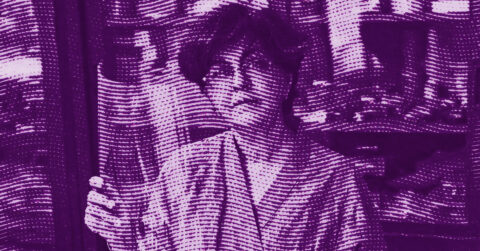Listen to me carefully, you bunch of snobs, I’m going to tell you about an artist who paints as if the world were collapsing in a burst of hysterical laughter. Dana Schutz is this woman who dares to look our era straight in the eyes and paint it in all its monstrous absurdity, transforming our collective anxieties into a pictorial carnival as disturbing as it is exhilarating.
In her Brooklyn studio, away from prying eyes, she creates monumental canvases where distorted figures, impossible bodies, and situations so unlikely that they become terribly true coexist. Her paintings are like funhouse mirrors of our society, reflecting our neuroses with surgical precision but always tinged with biting humor. Each brushstroke seems to carry the violence and absurdity of our time in a macabre dance that hypnotizes us as much as it repels us.
Let’s take “Jupiter’s Lottery” (2023), her latest exhibition at David Zwirner in New York. The title refers to an Aesop fable where Jupiter organizes a lottery of wisdom. When Minerva wins the first prize, mortals, jealous, receive madness as a consolation prize. And they are delighted! This exhibition is a perfect metaphor for our time, where triumphant stupidity proudly parades on social media while the world burns. The canvases that compose it are like so many open windows onto a parallel universe where reason has definitively abdicated its throne.
This is where we must delve into the philosophical concept of “active idiocy” developed by Jean-Yves Jouannais. This notion suggests that stupidity is not simply the absence of intelligence, but a creative force that can become a tool of resistance against the established order. The active idiot is not the one who does not know, but the one who deliberately chooses to know differently, to see the world through a distorting prism that reveals hidden truths. In Schutz’s paintings, the characters seem to embrace their own absurdity with fierce joy, as if they had discovered in their madness a form of ultimate freedom.
Take “The Gathering” (2023), this gigantic canvas over 6 meters long: a woman is perched on a small wheeled platform, her body twisted like a disjointed doll, surrounded by a crowd of grimacing spectators. It is our society of spectacle pushed to the absurd, where everyone performs their own madness before a greedy audience. The composition strangely recalls Delacroix’s “Liberty Leading the People,” but here, liberty has become a circus contortionist, and the people an assembly of voyeurs with faces distorted by unhealthy excitement.
The bodies in her paintings do not adhere to any conventional anatomy. They twist, stretch, fragment as if the flesh itself refused to conform to the laws of physics. This systematic deformation brings us back to the concept of “body without organs” theorized by Gilles Deleuze and Félix Guattari. For them, the body without organs is not an empty body, but a body freed from imposed organizations, from pre-established structures. It is a body that rejects the tyranny of biological organization to explore new possibilities of existence. Schutz’s figures are precisely that: bodies in revolt against their own form, against the constraints of traditional representation.
This rebellion against the natural order is especially expressed in her way of treating flesh. The skin of her characters is never a mere envelope but a battlefield where a constant struggle between form and formlessness plays out. Faces dissolve into masses of color, limbs multiply as in a nightmarish cubist vision, torsos open to reveal impossible interiors. It is as if Schutz sought to paint not the appearance of bodies, but their visceral experience of existence.
In “Beat Out the Sun” (2023), a group of men marches with a military step, brandishing boards to go beat the sun. The scene is utterly absurd, but isn’t that precisely what we are collectively doing with climate change? We continue our senseless rituals while the star reminds us that we are slowly cooking. The color palette is explosive: incandescent oranges, electric blues, acid greens that seem to radiate from inside the canvas. These colors do not describe the world, they burn it.
The composition of this painting is particularly remarkable in its way of playing with perspective. The figures are arranged like on an Egyptian frieze, but their collective movement creates a diagonal tension that threatens to topple the whole scene. The sun, represented as a burning disk with sharp rays, occupies the center of the composition like an impossible target. It is an image that perfectly captures the hubris of our era, our absurd conviction that we can control the forces of nature.
Schutz’s paintings are populated with creatures that seem to have emerged from a joyful nightmare. In “The Visible World” (2023), a naked woman lying on a rock in the middle of a stormy sea points at the rising water, while a giant bird perched on her thigh holds in its beak what could be the last genetically modified fruit on Earth. It is a scene both apocalyptic and burlesque, as if Hieronymus Bosch had decided to paint our era obsessed with ecological collapse.
The female figure, with her impossible proportions and unlikely pose, evokes the classical nudes of art history, but seen through the prism of a distorting mirror. Her body is both vulnerable and monstrous, victim and accomplice of the disaster unfolding around her. The bird, meanwhile, with its mysterious fruit, introduces an allegorical dimension reminiscent of 17th-century vanities, but transposed into our era of genetic manipulation and environmental catastrophe.
Her technique is as explosive as her subjects. The paint is applied in thick layers, creating reliefs that give the impression that the figures could detach from the canvas at any moment. The brushstrokes are visible, almost violent, as if the very act of painting were a form of hand-to-hand combat with reality. This excessive materiality of the paint reminds us that we are looking at constructed, fabricated objects, and not transparent windows onto the world.
This approach to pictorial matter reveals a deep understanding of modern painting history. One can see the influence of American Abstract Expressionism, but diverted towards figurative ends. The impastos sometimes recall Willem de Kooning, but whereas the latter dissolved the figure into the matter, Schutz uses the matter to make impossible figures emerge. It is as if she reverses the abstraction process, using its techniques to create images that are even more intensely figurative.
References to art history abound in her work, but they are always digested, transformed, made unrecognizable. One thinks of Philip Guston, James Ensor, but these influences are like ghosts haunting her canvases without ever completely possessing them. Schutz creates her own pictorial language, where horror and humor dance a dizzying pas de deux.
This dance is particularly visible in her portraits. In “The Arbiters” (2023), she paints a panel of grotesque judges, their faces deformed by expressions oscillating between arrogance and madness. It is a harsh critique of those who arrogate to themselves the right to judge art, society, the lives of others. But it is also a diverted self-portrait of the artist herself, aware of her ambiguous position in the contemporary art world.
The judges are depicted as hybrid creatures, half-human, half-monstrous, their bodies merging with their seats in a disturbing organic confusion. Their expressions are rendered with a caricatural precision reminiscent of Daumier’s charged busts, but pushed to a point of distortion where the comic turns unsettling. It is as if Schutz seeks to capture not the appearance of her subjects, but their moral essence, made visible in the form of physical deformation.
Because Schutz is no fool. She knows that her paintings circulate in an art market that turns everything into merchandise, even the most radical critique. But instead of sinking into sterile cynicism, she chooses to push this logic to the point of absurdity. Her paintings are like bombs of color that explode in the viewer’s face, forcing them to recognize their own participation in the collective madness she depicts.
This keen awareness of the institutional context of art is especially striking in her works that stage exhibition or performance situations. In “Presenter” (2023), a figure stands before a podium, her clothes disheveled, while a giant hand emerges from the darkness to snatch the words from her mouth. It is an image that perfectly captures the artist’s anxiety about the expectations of the art world, but also the violence inherent in any act of public presentation.
Violence is indeed omnipresent in her work, but it is a violence transformed into creative energy. In “Sea Group” (2023), one of her bronze sculptures, figures intertwine in a macabre dance, their bodies merging into an organic mass that defies all anatomical logic. It is as if the matter itself rebelled against its imposed form, creating new impossible but strangely alive configurations.
This sculpture marks a new direction in Schutz’s work, proving that her distorting vision can express itself as powerfully in three dimensions as in two. The figures seem caught in perpetual motion, as if the bronze itself were still solidifying. It is a work that perfectly captures the tension between order and chaos that characterizes all her work.
What makes Schutz’s strength is her ability to maintain a precarious balance between the comic and the tragic, between social critique and pure pictorial enjoyment. Her paintings are like cosmic jokes that make us laugh bitterly while forcing us to face the absurdities of our era. She transforms our deepest fears into a carnival spectacle that allows us to confront them without sinking into despair.
This transformation is particularly evident in the way she addresses contemporary themes. Whether it is the climate crisis, genetic manipulation, or the society of the spectacle, she approaches these subjects not with the pontifical seriousness of “engaged” art but with a biting irony that reveals their fundamental absurdity. It is an approach that recalls the concept of “carnivalesque” developed by Mikhail Bakhtin, where laughter becomes a means of subverting established hierarchies and revealing hidden truths.
In a world where contemporary art often gets lost in disembodied conceptual abstractions or in sanitized minimalism, Schutz dares to be maximal, excessive, grotesque. She paints as if her life depends on it, as if each painting were a desperate attempt to give shape to the chaos of our time. Her works do not offer the comfort of distanced contemplation; they pull us into their whirlwind of forms and colors.
Her work does not offer easy solutions, no comforting morals. Instead, it offers us a liberating laughter in the face of the absurdity of our condition. It is a laughter that resonates like a thunderclap in the artificial sky of contemporary art, reminding us that painting can still be a living, disturbing, and necessary force.
Each painting by Schutz is like a new proposal on how we might see the world if we dared to abandon our certainties. Her distorted figures, impossible spaces, and hallucinatory colors are not escapes into fantasy, but attempts to capture a reality that eludes conventional modes of representation. She shows us that the truth may not lie in the accuracy of representation, but in the intensity of experience.
In a world rushing to its doom with a smile on its lips, Dana Schutz is the artist we need: the one who dares to look madness in the face and paint it in all its grotesque splendor. She shows us that if we have to dance on the volcano, we might as well do it with style and panache, laughing at our own absurdity until the last second. Her paintings are mirrors reflecting our distorted image, but perhaps one truer than the one we usually see. In their very excess, they remind us that art does not have to be wise to be profound, nor serious to tell the truth.
















